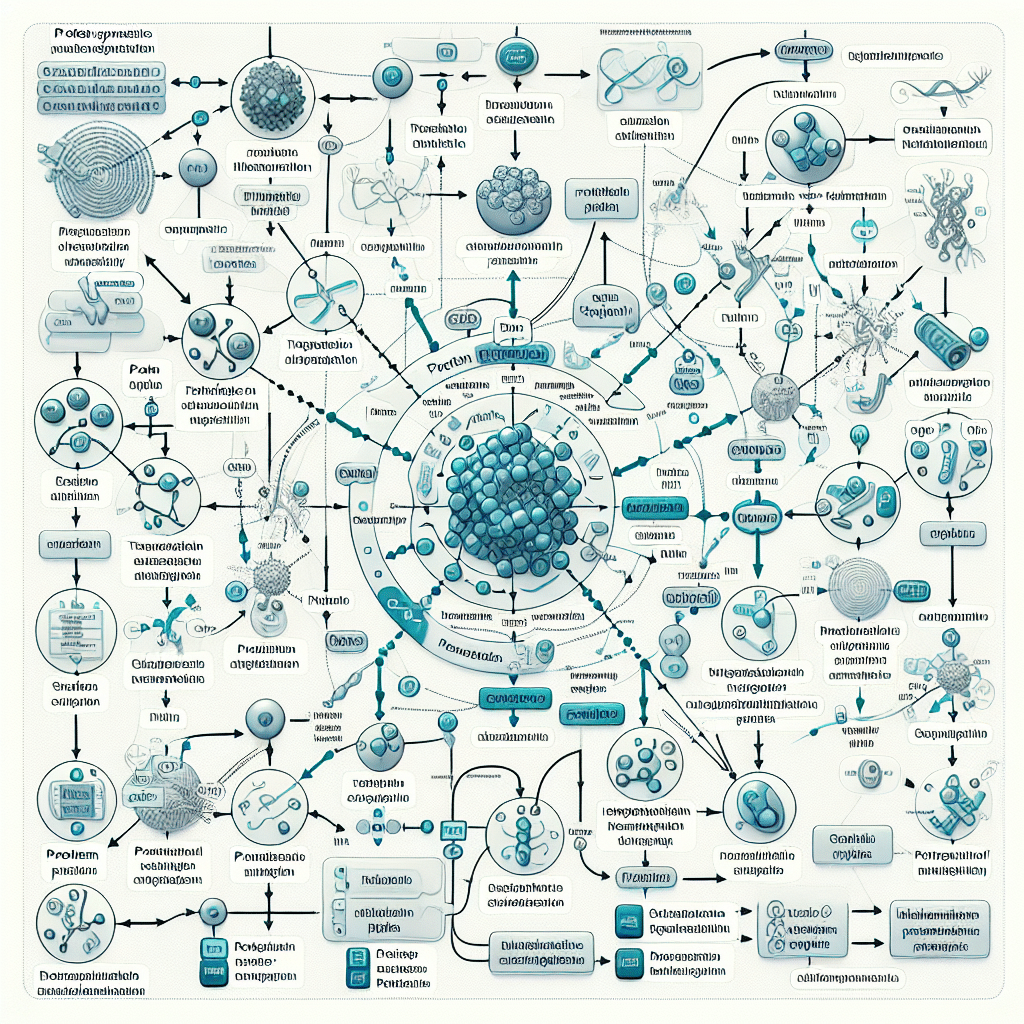Protein Concept Map: Simplifying Complex Processes
-
Table of Contents
- Protein Concept Map: Unraveling the Intricacies of Protein Biology
- Understanding the Basics of Proteins
- Creating a Protein Concept Map
- Protein Synthesis and Regulation
- Protein Interactions and Pathways
- Applications of Protein Concept Maps in Research and Education
- Case Studies and Examples
- Conclusion: Key Takeaways of Protein Concept Mapping
- Discover ETprotein’s High-Quality Protein Products
Protein Concept Map: Unraveling the Intricacies of Protein Biology

Proteins are the workhorses of the cell, involved in virtually every biological process. Understanding how proteins function, interact, and are regulated is crucial for advancing our knowledge in biology, medicine, and biotechnology. A protein concept map is a powerful tool that simplifies the complex processes involving proteins by visually organizing and illustrating the relationships between different concepts and entities. In this article, we will explore the utility of protein concept maps and how they can be used to enhance our understanding of protein biology.
Understanding the Basics of Proteins
Before delving into the concept map, it is essential to grasp the fundamentals of proteins. Proteins are large, complex molecules made up of amino acids, which are the building blocks that determine the protein’s structure and function. The sequence of amino acids in a protein is encoded by genes, and this sequence dictates how the protein will fold into its three-dimensional shape.
- Protein Structure: Primary, secondary, tertiary, and quaternary structures.
- Protein Functions: Enzymes, hormones, structural components, transporters, and antibodies.
- Protein Synthesis: Transcription and translation processes.
- Protein Regulation: Post-translational modifications and signaling pathways.
Creating a Protein Concept Map
A protein concept map can be created to visualize the various aspects of protein biology. The map starts with a central concept, such as “Protein,” and branches out into related sub-concepts and processes. Here’s how to build a comprehensive protein concept map:
- Identify Key Concepts: Start with the central idea of “Protein” and identify related concepts such as amino acids, protein synthesis, structure, and function.
- Establish Relationships: Draw lines or arrows to connect related concepts and illustrate the flow of information or processes.
- Include Details: Add specific examples, such as types of proteins or regulatory mechanisms, to provide depth to the map.
- Use Visual Cues: Employ different colors, shapes, or symbols to differentiate between concepts and processes.
Protein Synthesis and Regulation
One of the critical areas where a protein concept map is particularly useful is in detailing the process of protein synthesis and regulation. This includes the transcription of DNA into mRNA, the translation of mRNA into a polypeptide chain, and the folding of that chain into a functional protein. Additionally, the map can illustrate the various levels of regulation, from gene expression to post-translational modifications such as phosphorylation or ubiquitination.
Protein Interactions and Pathways
Proteins rarely act alone; they interact with other proteins and molecules to carry out their functions. A concept map can help clarify these complex interactions by showing how proteins are involved in signaling pathways, metabolic pathways, and the formation of protein complexes. For example, a map could illustrate the cascade of events in a signaling pathway triggered by a hormone binding to its receptor.
Applications of Protein Concept Maps in Research and Education
Protein concept maps have numerous applications in both research and education:
- Facilitating Learning: Concept maps can be used as educational tools to help students visualize and understand the complex relationships in protein biology.
- Research Planning: Researchers can use concept maps to outline the knowns and unknowns in a particular area, guiding future experiments.
- Data Organization: Concept maps can organize large amounts of data in a way that highlights the most critical relationships and findings.
Case Studies and Examples
Several case studies demonstrate the effectiveness of protein concept maps in various contexts:
- Medical Research: Concept maps have been used to understand the protein interactions involved in diseases such as cancer or Alzheimer’s.
- Drug Development: Mapping out the targets of potential drugs can help in the design of new therapeutics.
- Educational Tools: Concept maps have improved students’ comprehension and retention of complex subjects like protein metabolism.
Conclusion: Key Takeaways of Protein Concept Mapping
In summary, protein concept maps are invaluable tools for simplifying the complex processes involved in protein biology. They provide a visual representation that can enhance understanding, facilitate learning, and guide research. By breaking down intricate systems into manageable components, concept maps allow for a clearer comprehension of how proteins function and interact within the cell.
Discover ETprotein’s High-Quality Protein Products
If you’re looking for premium protein sources to support your health, fitness, or manufacturing needs, consider ETprotein’s range of plant-based protein products. Their extensive selection includes organic rice protein, clear pea protein, and various seed proteins, all characterized by a neutral taste and non-GMO, allergen-free attributes. Catering to industries such as nutraceuticals, pharmaceuticals, and food and beverage, ETprotein is your go-to supplier for high-quality protein solutions.
About ETprotein:
ETprotein, a reputable plant protein vegan protein Chinese factory manufacturer and supplier, is renowned for producing, stocking, exporting, and delivering the highest quality organic bulk vegan protein and plant proteins. They include Organic rice protein, clear rice protein, pea protein, clear pea protein, watermelon seed protein, pumpkin seed protein, sunflower seed protein, mung bean protein, peanut protein etc. Their offerings, characterized by a neutral taste, non-GMO, allergen-free attributes, cater to a diverse range of industries. They serve nutraceutical, pharmaceutical, cosmeceutical, veterinary, as well as food and beverage finished product distributors, traders, and manufacturers across Europe, USA, Canada, Australia, Thailand, Japan, Korea, Brazil, and Chile, among others.
ETprotein specialization includes exporting and delivering tailor-made protein powder and finished nutritional supplements. Their extensive product range covers sectors like Food and Beverage, Sports Nutrition, Weight Management, Dietary Supplements, Health and Wellness Products, and Infant Formula, ensuring comprehensive solutions to meet all your protein needs.
As a trusted company by leading global food and beverage brands and Fortune 500 companies, ETprotein reinforces China’s reputation in the global arena. For more information or to sample their products, please contact them and email sales(at)ETprotein.com today.












